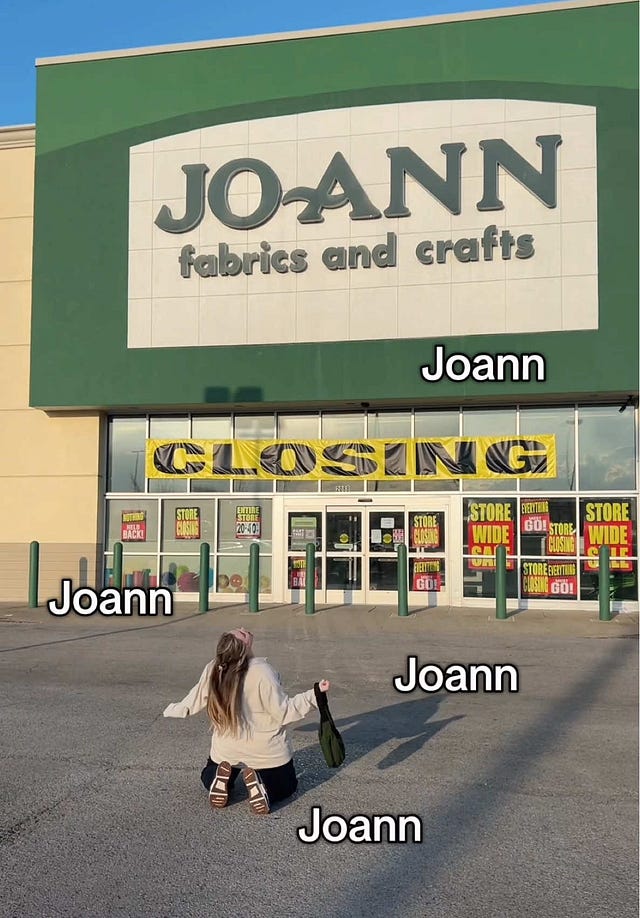The engineer coding whimsical tech-fueled garments
Christina Ernst has gone viral for a Medusa-inspired dress with moving snake heads, a self-knitting hat and a motorized 'Ratatouille' costume, all to inspire others to get into STEM.
As for many sewists, some of my earliest memories of crafting involve going to JOANN Fabrics for the supplies to make the creations of my wildest dreams. Even if I’ve moved on to buying as many of my supplies secondhand as I can or from small businesses, the announcement of the craft chain’s closure still left me feeling a tinge of sadness. (See the TikTok remembrances in the Scrap pile below.) The move felt even more shocking given the steady revival of textile arts since the pandemic. Some have pointed to the role of private equity and economic factors in the store’s failure. I’d argue the main factor is its failure to meet the moment and understand its customer base. When I went to a JOANN store, I’d always wonder why copious displays of cheap, seasonal products and other goods that could only be classified as junk were given pride of place, while actual craft supplies seemed relegated to back corners. (I can’t find anyone who’s written on this point, but I thought this TikTok analysis was spot on.) Sure, a good deal could be found with the right coupon for sewing patterns or fabric. But the experience was completely unlike going to a local shop run by people who love nothing more than sharing their craft with others.
I thought of this while I was in New York recently and visited Mood Fabrics (an overwhelming but organized mecca with knowledgable staff who’ll find the most specific fabric) and the Brooklyn General Store, a gorgeously curated space that’s a pleasure to explore.
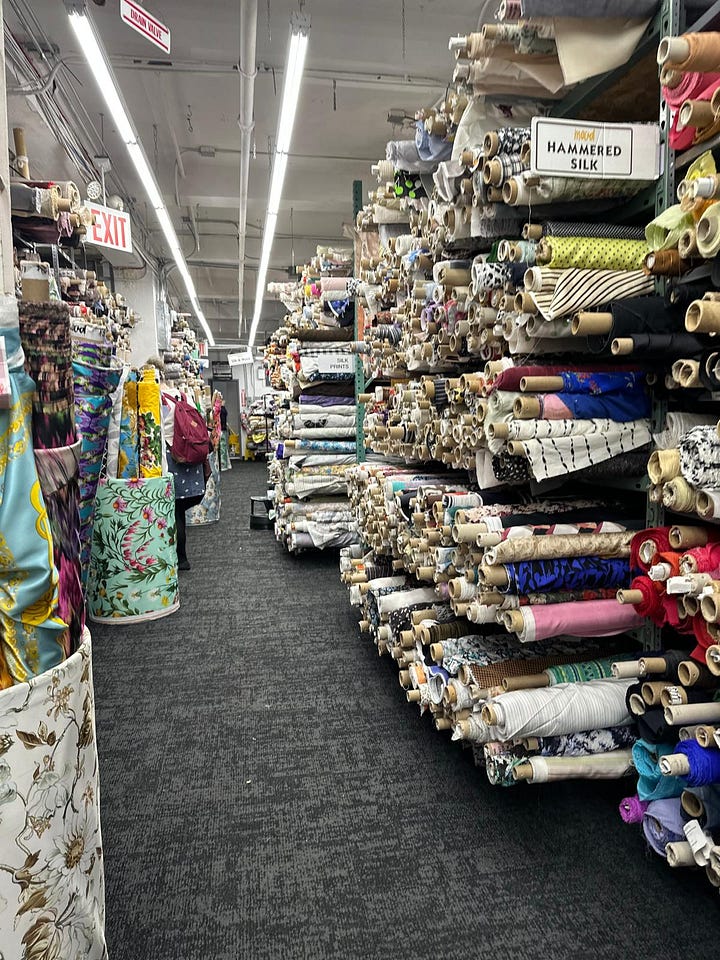

They are two very different shops but in their own ways are designed to cater to their audiences. While I hope JOANN’s closure will mean independent operations like these continue to prosper, I also think of how many people are losing their only option for buying materials in person. Although there are many options to buy online (including from both shops mentioned above), any crafter will tell you there’s nothing like feeling a piece of fabric or yarn in your hand to know it’s the right one.
While in New York, I also visited FABSCRAP, a creative reuse nonprofit that sorts and sells unused fabric from the fashion industry. I picked up a gorgeous black wool, white eyelit, and a few yards of jacquard for a friend’s birthday. I’ve previously written about my love of reuse shops like SCRAP in Portland. I recently came across this pretty comprehensive list of creative reuse shops around the US and am looking to write more about how these businesses can fill the gap JOANN is leaving. In the meantime, I’m excited to share my interview with Christina Ernst, who is encouraging young people to pick up a needle (or soldering iron) to expand creative and professional opportunities in STEM. But first, the Scrap pile.
Scrap pile
The Rosewyn Dress & Blouse from Gold & Skye has multiple Victorian nightgown-inspired options.
The Tulip Dress from Fortiv is a fun extension of its Tulip Top pattern.
Helen’s Closet Falconer Pants have some clever design details.
The Assembly Line Poncho Shirt is such a fun take on a button-down.
Itch to Stitch designed a wardrobe staple with the Kashi Tee & Dress.
In the TikTok corner, a few memorials to the end of JOANN.
 Tiktok failed to load.
Tiktok failed to load.Enable 3rd party cookies or use another browser
 Tiktok failed to load.
Tiktok failed to load.Enable 3rd party cookies or use another browser
And I loved this process of recreating a Comme des Garçons skirt.
Threading the needle with Christina Ernst
Every edition of Sew You Have a Question features a Threading the Needle Interview with someone in the textile arts world whose brain I want to pick. This time, I was thrilled to chat with engineer and sewist Christina Ernst about using the latest technology to create coded garments that stretch the boundaries of fashion design.
How did sewing and coding come together for you?
As a fellow sewist, you know how much math is involved in sewing. It's algebra, geometry, spatial thinking, all things I'm into as a math nerd. I love the way patterns jump out and fit together. As I started patterning and making garments, I saw all the math fit together in a way that gave shape to a 3D form. It was beautiful and exciting. In the beginning, I was flying by the seat of my pants, cutting up my clothing, sewing abominations together. When I got to high school, I’d make some of my dresses for dances like homecoming.
Did the fashion and tech worlds feel separate to you at that time?
Absolutely. I didn’t foresee a future where these could work together in any career. When I was deciding on a college major, I was torn between fashion design and computer engineering. In my head, those were completely irreconcilable. There was going to be no overlap. I chose computer engineering because I love math and computers. That was the right choice for me.
My origin story combining them was a 2017 hackathon at my school, a weekend of messing around with technology. I wanted to take advantage of the sewing machines in our maker lab but also the local circuit lab. I made this color-changing, Bluetooth-controlled light-up dress as my first project. Because it felt so new and there were no examples in the world to point to, no one wanted to be on my team to build that. It was rewarding to see its reception. I had girl after girl coming up to my booth and say, "I’d love to learn how to code just so I can learn how to make this dress." That was the lightbulb moment for me.
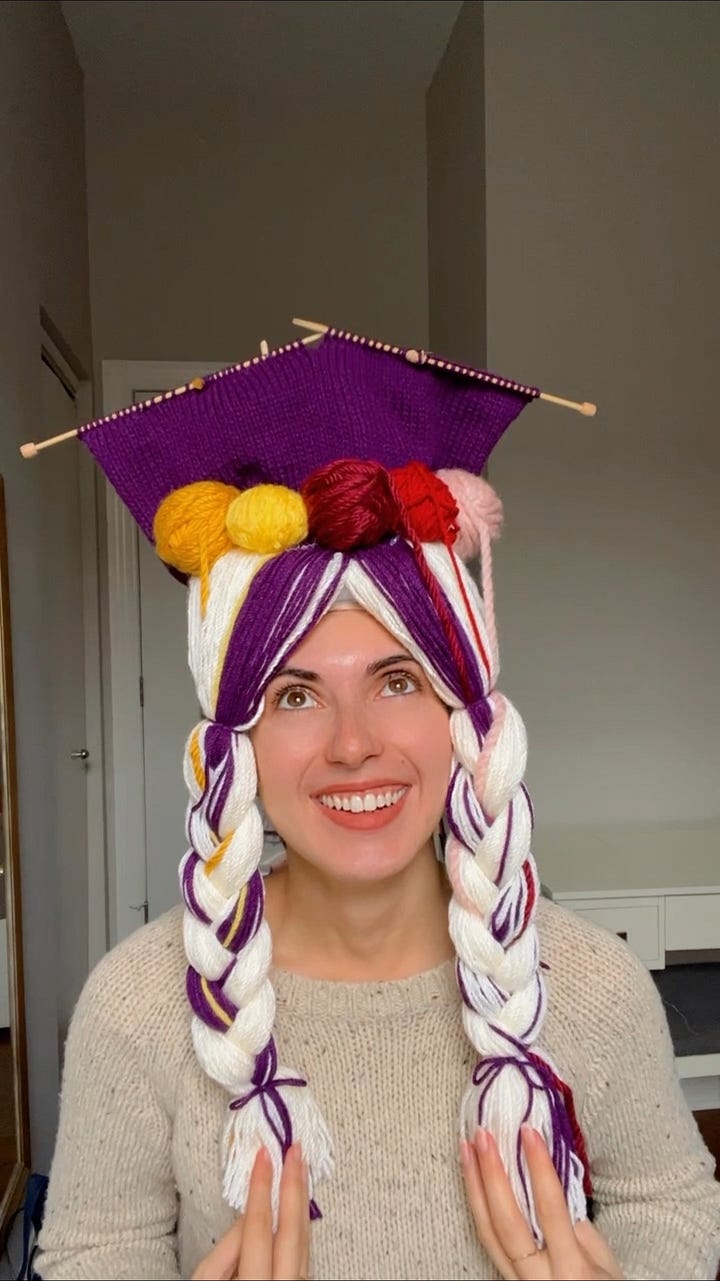
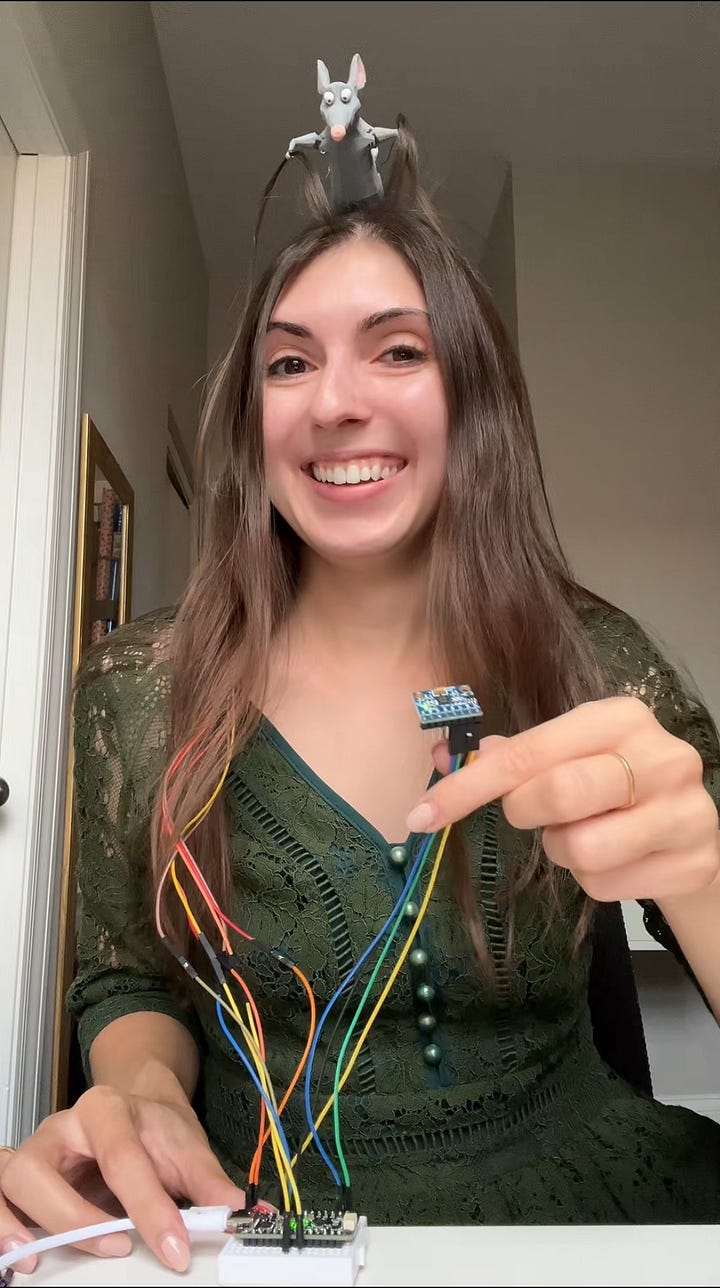
Did you feel as a woman in STEM that there wasn't a space for your interests to be represented?
Oh, absolutely. My crafting and textile hobbies were something I wouldn’t talk about with people in my major. It felt like something I’m setting out to do on my own. After I demoed that hackathon dress, I got a micro-grant. People asked me, "Are you going to productionize and sell this dress?" I didn't feel the world needed anything like that. But I was so inspired by how much of a vehicle this seemed to be for getting girls interested in the creative side of technology. So I put that grant money toward developing a curriculum that's on my website today of fashion and art projects involving circuits and coding.
What's your creative process?
As a concrete example, we could talk through what I recently made for the Chicago Public Library. I was their maker in residence, which including making a window display for their State Street Library branch. I made a phoenix-inspired dress, with phoenix feathers that oscillate between the colors of the flames and gold to give the impression of burning. That's a nod to some Chicago history. I love starting with whimsy, fantasy-inspired designs because to me, that's what technology is. It's a vehicle for almost magic. A lot of my designs are inspired by “if we lived in a magical world, what would the villain or the wizard wear?”
I’d love to say I start with a sketch and a well-thought-out plan. But I like to work backward from the parts I know are available. Especially when designing for textiles, you have to consider what’s lightweight, what’s portable in terms of powering it with batteries or lights. Also, what’s affordable? I'll start with, okay, I have these motors. What is their range of motion? Is it in one axis, two? How much weight can I attach to it? How can I loop together some fabric pieces in a creative way to get more movement out of the motor? For example, with the phoenix dress, rather than attaching one motor to every feather, I came up with a system of fishing line that invisibly connects them. It's a lot of experimenting, starting with the parts I have and then prototyping with cardboard, paper, fishing wire, very low-tech materials, to maximize the amount of movement or power. Then it’s building the garment around these structural limitations.
I love that you show the process of finding the right way to do something. In so many sewing communities, there are conversations around highlighting challenges and even mistakes to show we aren’t perfect and that any craft is a learning process. Why’s that important to you?
It’s easy to get discouraged, both as an artist and an engineer. I want to show as many people as possible that even if you have a beautiful sketch at the beginning, not everything is going to go right. That doesn't make you a failure. It just means you need to iterate more. And you’ll learn a lot. Not everything comes out of a pristine lab or is perfect on the very first try. Perseverance is a skill you can build and learn, and you'll need it as an engineer.
Often I say, man, I wish I had a manager, someone I can escalate to when things are going wrong. It's a feeling of frustration when you're working in a brand-new space. There's not a lot of precedent to help you fix the issue. What helps is to remind myself of what I’ve accomplished. I’ve run into snags and roadblocks before. I’ve had to redo a prototype 10 times. Things will be hard but I can do hard things is integral to me being able to work through those struggles.
What is the moment like when the lightbulb finally goes on?
It feels so good. I unblock a wave of creativity and energy. Once I get some piece working, I could stay up all night continuing to iterate and seeing the project through. That's something I emphasize with people considering engineering but who worry it’ll be too hard or frustrating. Yes, that’s part of the job, but then you get those highs that are even higher because you've proven to yourself that you can do this thing.
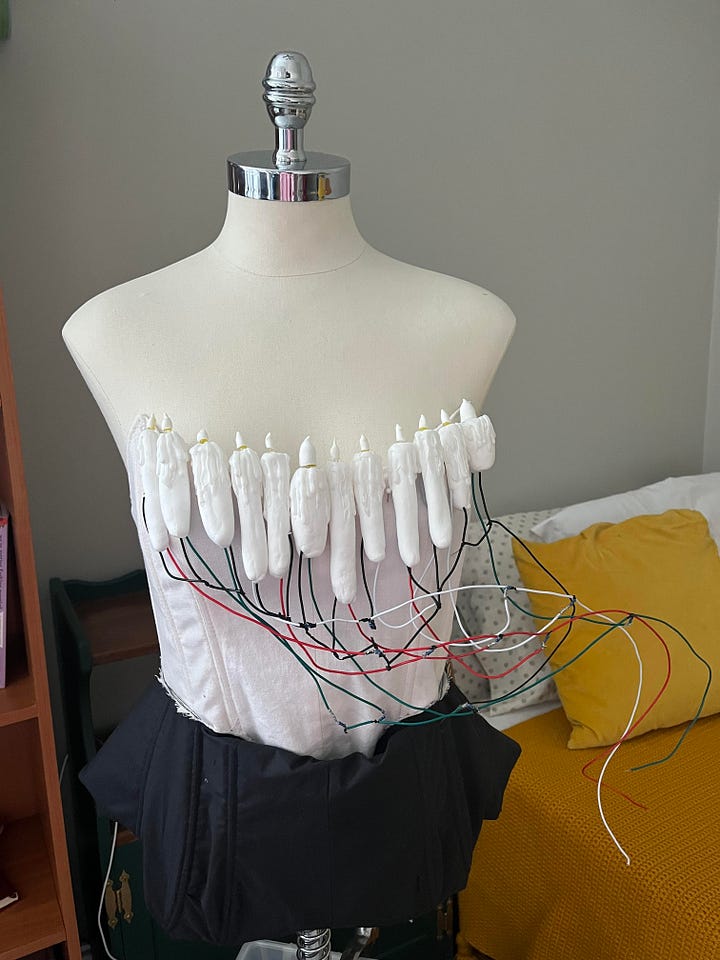
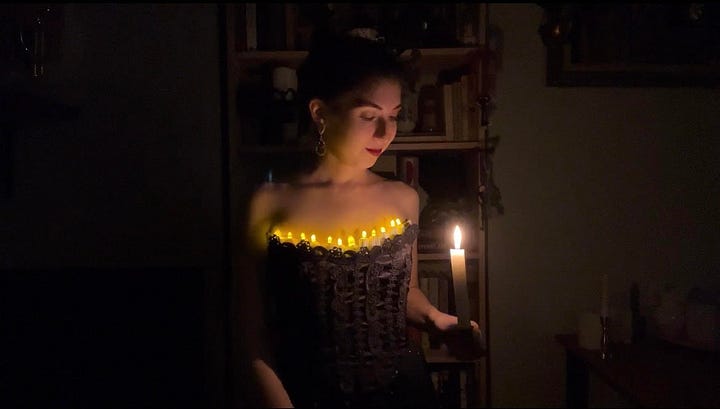
What are some of the specific technologies you've used to push your work forward?
In particular, microtechnology and wearable technology have made many strides in recent years with what's available to consumers. Some of the parts I love to use are from a brand called Adafruit. They do a lot of hobbyist electronics, specifically, sewable microcontrollers. They have a conductive thread that sews into a little computer that you program. They also have lightweight boards about the size of my thumb, or smaller. They're easy to slip into a pocket or sew into a headline. I had fun earlier this year playing with a chip that integrates a camera and does some AI facial recognition, all on a little chip that costs about $10. I integrated that into a moving snake head to do something Medusa inspired. It's fun seeing what an average person with a hobbyist budget can do with this technology. It's just plug and play, which is awesome.
How has 3D printing played a role in your work?
Because so many of the parts I use aren't traditionally meant to go in clothing, a lot of what I make needs a custom mount or rig to integrate with what I'm wearing. A lot of the time that means I'm designing little custom sewable pads, whether that's for a motor or a light fixture, something that can bridge that gap between this hard, rigid piece of technology and the soft fabric that it needs to be able to move and flex with.
In the video for the Medusa dress, you mentioned the surveillance state. I'm wondering how commentary around tech fits into your work.
When talking about my work, it's very tempting to frame it as the fashion of the future, like this what we're all going to be wearing in 20 years. I try to shut that down as much as possible. The intention of what I make is not to necessarily even be worn or mass produced or sold. It’s a fun teaching vehicle to show people what is possible with technology. I love using what I do in fashioneering as a teaching vehicle, but not necessarily as an end game for society, especially as we want to move toward a more sustainable world, not one where we're all wearing battery packs all the time.
What projects are you working on now?
I have an obscenely long list of things I’d like to tackle this year. Concretely, I'm working with some higher-grade, more professional-grade motors to make an ideally magical-looking self-twirling dress. My motivation is to see what's possible, bridging that gap between the hobby-grade things I've been working with and more production grade, like costuming or robotic, professional-level motors. It's a new space that not a lot of people are working in. I'm excited to play around and see what's possible.
Are there other creators in fashion tech you're inspired by?
One of the earliest women I know of doing wearable fashion tech is Becky Stern. She worked at Adafruit during those formative years of wearable tech. I learned a lot from her online tutorials when I was an engineer and found her very inspiring. Cameron Hughes is someone I follow on Instagram who’s done cool work with combining fashion and motor.


